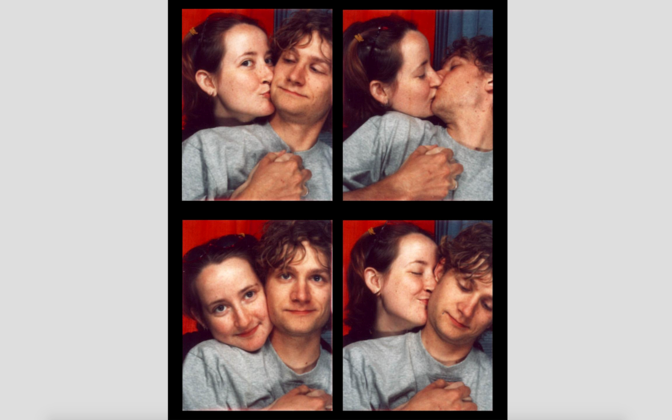Recently, Johanna Ross defended her doctoral thesis at the University of Tartu in which she examined works by Soviet Estonian women writers and the depiction of female characters in them.
This topic has intrigued Johanna Ross for a long time. About ten years ago, she began writing a master’s thesis on the topic of Aimée Beekman’s novel An Opportunity for Choice (Valikuvõimalus), more specifically, on the topic of its reception. It has been said that this novel influenced a whole generation of women by challenging the current model of marriage, as discussed in Universitas Tartuensis magazine.
The 1970s and 80s were different for Soviet Estonian literature than earlier times. Many novels on contemporary topics were published, which focused mainly on the marital and extramarital relationships of the characters. Even though these novels were read and talked of, they were considered to have a low literary value.
Understood differently
Retrospectively, these novels and the common direction have been interpreted differently. It has been found that these novels were light fiction and not recognised or acknowledged by the Soviet critics as such. On the other hand, signs of an onset of feminist consciousness in these novels have been seen in these novels.
In her doctoral thesis, Ross gave an overview of novels by Soviet Estonian women authors which can be read as Bildungsroman. These novels focus on the young female protagonist’s quest for her role in society, seeking to reconcile her own wants and desires with societal expectations.
The literary texts analysed by Ross depict the personal and societal growth of a woman, but are created under specific conditions. Firstly, the public order is totalitarian and secondly, female roles dominating both the actual political sphere and the social praxis diverge from the official ideal.
Thirdly, literature by default functions as a site of resistance where opposition to the official doctrine is considered de rigueur.
Johanna Ross wanted to find out, which situations are played out on literary characters and how they resonate with the audience. For this purpose, she designed two ways of reading.
The first one is a national-oppositional reading mode. This reading assumes that literature rebels against the Soviet regime and the Soviet literary ideology by trying to subvert it in a surreptitious manner that is recognisable for the informed reader.
The second is a feminist reading mode which also often employs a subversive rhetoric of resistance by either criticising the traditional gender roles and the corresponding storylines.
In the analysis of the texts, Ross included their contemporary reviews, taking into account that the reviews published in the Soviet media might not have reflected the immediate reading experience, but were informed to a considerable extent by the political currents of the time.
Among others, Ross also looked at war novels published mainly in the 1960s. According to her, the Khrushchev Thaw made it possible, both in Estonia and elsewhere in the Soviet Union, to write about war in a slightly different manner than before.
Thus, the authors could pay more attention to the meaning of war for the individual. “Based on my thesis, it could be concluded that Estonian women writers carried out this deviation by depicting everyday life in the home front or in occupied areas where there was a majority of women”, said Ross.
Authors largely depicted their own experience, or that of their close acquaintances. However, the female characters created were strong women who were not afraid of physical labour, as dictated by the Soviet ideology. Ideologically, they are also pure and righteous, or at least on the path to such purity. On the other hand, these characters are created in a very feminine way. The author draws attention to their physical appearance and their caring nature.
On the one hand, they have romantic interests, but – in keeping with a typical model for the female Bildungsroman – romances seldom have a happy ending. The female protagonist typically has to – and wants to – cope on her own.
Changes between editions
One of the novels that Ross looked at more closely was With Tale of the River Emajõgi (Emajõe jutustus) by Luise Vaher. Her attention was primarily drawn to the differences between the two editions published in 1960 and 1974. The author has made changes to the text that mostly concern the female protagonist Anneli and her life.
The earlier Anneli took the path destined for a hero of a Soviet novel distancing herself from her old life and reactionary family and striving towards a new, communist social order.
“Descriptions of her looks, thoughts and feelings, however, are often reminiscent of a romantic heroine straight out of a “bourgeois” romance novel – a popular genre in Estonia during the author’s youth”, said Ross.
In the new edition, the author tries to make Anneli’s story more “correct”, to mould the protagonist into a more politically conscious Soviet woman. Descriptions of her looks and romantic scenes have been cut down and in general, the importance of a romantic storyline for her has been downplayed. “This decreases the importance of the private sphere in the novel and in turn makes the story less appealing for the audience”, thought Ross.
The author of the doctoral thesis also looked at Village Without Men (Meesteta küla) by Lilli Promet. This novel, set in the home front has an abundance of female characters, descriptions of their past and wartime scenes of their everyday lives.
The novel is made significant by the fact that the author and various institutions wrangled for three years over its publication. Ross explained that the main reason concerned the structure of the text which put it into contrast with the heroic narrative of the Great Patriotic War.
During those three years, when the publishing of the novel was delayed, the range expanded of what was considered as being acceptable. “The novel in question served as an agent of change itself in the local context and permission was finally given”, said Ross.
As a result, the publication history of the novel marks it out as a bold, rebellious act despite the fact that the text itself includes utterly Soviet scenes of meetings and people singing The Internationale together, for example.
Almost 20 years later, Lilli Promet writes the novel Girls from the Sky (Tüdrukud taevast). The protagonist is an Estonian-born Soviet female parachutist who is tasked with gathering information in German-occupied Estonia. The protagonist is described as particularly ladylike, drawing attention and letting herself notice her own and other women’s clothes and hair.
The reception of the novel was rather cold. Ross considers one of the reasons was probably because war history, including the occupation of Estonia, was still a highly regulated subject despite the slowly slackening ideological constraints and remained so up until the collapse of the Soviet Union. “These traumas had still not been talked through for Estonians. The audience was somewhat sceptical towards any sort of lighter approach to the subject”, said Ross.
Ross noted the same for Aimée Beekman’s Potato Bells (Kartulikuljused). It does not give priority to the gender issue but it depicts Estonians’ mass escape to the West in 1944 in a grotesque light.
Another reason is the gender discourse that had undergone a change by 1979. Girls from the Sky found itself against the backdrop of the so-called everyday literature rather than war literature.
“Although the feminisation of the character of a Soviet female parachutist could have been intriguing in theory, it seemed more like a caricature at the time, belittling both war and women, and the audience was not amused”, said Ross.
Ross looked more closely at marriage novels that centre on the question of reaching, maintaining or breaking up a marriage. The first such novel she analysed was Ukuaru by Veera Saar.
It is a two-part novel, with a significant focus on finding oneself either through professional, social self-actualisation or through family.
Perhaps the most remarkable part for Ross is the way that half of Ukuaru has been almost completely forgotten. The story of private self-actualization as embodied by Minna of Ukuaru is well remembered: she lives during the lost Golden Age, the Republic of Estonia of the 1930s, and fits the romantic archetype of an Estonian country woman.
At the same time, Kaili, a Soviet Estonian forestry worker in the 1950s, who works hard to break out of the shadow of her husband, has been left out.
Influenced by the completion of the library
Ross explained that as the library of the University of Tartu was closed to the renovation works during the last years of writing her doctoral thesis, she had to find help from Tartu Oskar Luts Public Library and the Estonian Literary Museum’s Archival Library.
At the same time, the author of the doctoral thesis found that the need for being at the library physically has declined.
While writing the thesis, Artiklite ja Retsensioonide Kroonika (Chronicle of Articles and Reviews), journals Keel ja kirjandus (Language and Literature), Looming (Creation) and Vikerkaar (Rainbow) as well as the newspaper Sirp ja Vasar (Sickle and Hammer) had also been fully digitised and made available online. This made work considerably easier.
The translation of this article from Estonian Public Broadcasting science news portal Novaator was funded by the European Regional Development Fund through Estonian Research Council.
 Back
Back



